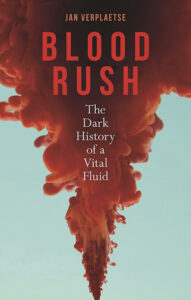 In the opening chapter of his recently published Blood Rush; the Dark History of a Vital Fluid, Prof. Jan Verplaetse, following on his explanation of the rumors circulating in ancient Rome about how early Christians were said to have practiced debauched rituals in the dark of night in which they killed, drank the blood of, and sometimes even ate the the flesh of murdered babies, observes “The venom with which the pagans wanted to condemn the Christians was matched by the hatred of the orthodox Christians for renegade heretics. In both cases, allegations were propaganda for showing the opponent in a bad light. Accusing hostile groups of bloody atrocities is as old as human history.”
In the opening chapter of his recently published Blood Rush; the Dark History of a Vital Fluid, Prof. Jan Verplaetse, following on his explanation of the rumors circulating in ancient Rome about how early Christians were said to have practiced debauched rituals in the dark of night in which they killed, drank the blood of, and sometimes even ate the the flesh of murdered babies, observes “The venom with which the pagans wanted to condemn the Christians was matched by the hatred of the orthodox Christians for renegade heretics. In both cases, allegations were propaganda for showing the opponent in a bad light. Accusing hostile groups of bloody atrocities is as old as human history.”
Listening to a recent episode from Al Jazeera’s The Take podcast, in which Aoife Gallagher and Rudy Bouma insightfully and skillfully explored the origin and activities of a present-day political cult, the very name of which is only equalled in stupidity by the deluded beliefs – which include slanderous rumors of the very same “bloody atrocities” as were leveled against the early and heterodox Christians – it seeks to spread, I was reminded of just how plus ça change, plus c’est la même chose.
As one whose life – due to hereditary hemochromatosis – revolves around the monitoring and regular letting of my own blood, I’ve developed quite an interest in it over recent years. So when word of Prof. Verplaetse’s new book, published by University of Chicago Press and Reaktion Books, reached me, promising to delve into not just the physical, but also the philosophical and sociological aspects as well of this fluid we all share, I knew it was a book I needed to read.
I’m approximately half way through it at the time of this writing, and I am absolutely enthralled by the richness of Prof. Verplaetse’s explanations and analyses of a wide range of the ways we humans have understood, sacralized, feared, and used blood down through the ages. Look for more to be said here about this book in the near future.
